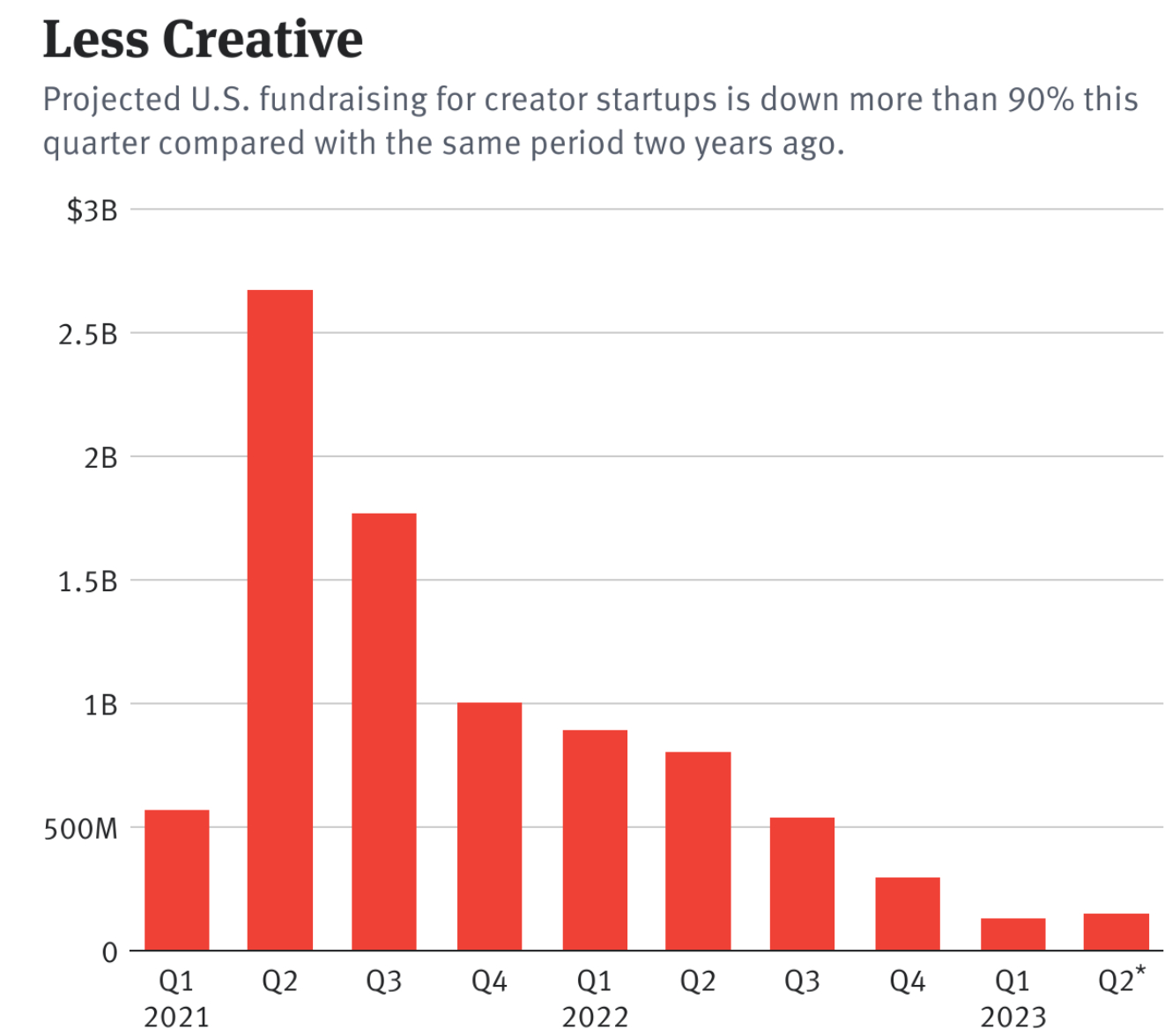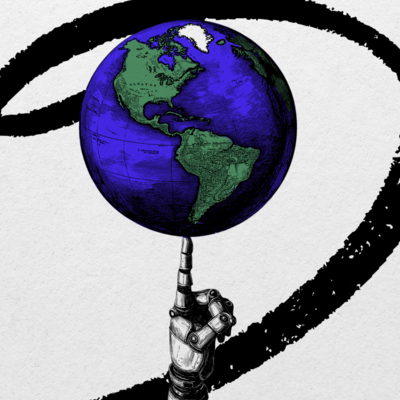
Sponsored By: Brilliant
This article is brought to you by Brilliant, the app that helps you ramp up on the skills of the future—from math and logic to data science, programming, and beyond.
I called it. While I usually love saying that, this time doesn’t feel as good.
In May of 2022, I argued that we were about to enter into a creator economy winter. The startups serving the digital entrepreneurs creating online content would struggle. Specifically, I forecasted that because only the top 1% of creators make any real money, a startup would have to either 1) capture a percentage of their biggest customer’s revenue or 2) find a way to sell to the long tail of part-time creators. Because of this struggle, funding would dry up and we would see most startups fail.
The response to that original post was pretty heated—I got some angry DMs from founders and investors. “Creators are the future!” “You don’t get the trends!” “Look at Mr. Beast!” (For whatever reason, VCs love to trot out Mr. Beast for any topic even tangentially related to online content). These defenders were wrong.
First, creator economy funding crashed. Dollars invested are down 86% to $123M. In comparison, funding for the broader market is down ~50% year over year.
Next came the layoffs. The giants of the space have had issues: Patreon laid off 17% of staff, Linktree first sacked 17% of staff, then a few months later another 27%, Cameo has laid off 160 (probably 33%+ of staff), Substack laid off 14%, on and on. While many startups had layoffs, it is unusual that all the stalwarts of an industry, the so-called ‘safe bets' are the ones who were making such big cuts.
Now, I have heard whispers of multiple creator economy startups quietly shutting down. This isn’t a newspaper and I’m not a journalist so I’m not going to publish a list. This is a moment of heartache for founders, so I’ll leave it to other publications to spill secrets. Most are smaller players, but there may be a few surprises in there.
In my opinion, the creator economy thesis fell apart because investors had a fundamental misunderstanding of what risks they were underwriting. They didn’t understand the media industry, they didn’t understand creators’ needs, and they totally missed that this was a vertical SaaS bet.
To understand why creator economy bets were bad, you have to understand why creators themselves are a bad business.
What is a creator?
A small business in general is a shitty business. 65% fail in the first 10 years in the U.S.
A media company is also a shitty investment. Media stocks had their worst decline in 30 years in 2022.
The Only Subscription
You Need to
Stay at the
Edge of AI
The essential toolkit for those shaping the future
"This might be the best value you
can get from an AI subscription."
- Jay S.
Join 100,000+ leaders, builders, and innovators

Email address
Already have an account? Sign in
What is included in a subscription?
Daily insights from AI pioneers + early access to powerful AI tools











Comments
Don't have an account? Sign up!
It's interesting when VCs always want your pitch deck to look like every other and define your problem down to one simple idea [seemingly so they don't have to understand how much engineering went into the unicorn].
W3 is an economic and technological revolution and while the masses do not doubt they will use it some day, they don't know how nor why yet. So in order to engineer an onramp for the noobs, you have to solve MANY problems. While my solution statements says 'an Build in Public suite as an onramp'. They surely would not even wonder why it is a BIP suite, in fact they will not get it because when investors think of W3, they see it as a centralized, 'all or nothing' centralized model. The old economy is trying to crowbar W3 into it (another problem) and there's a new kid in town (see layoff list above).
So the short tie in to the article is because the suite too solves the problem for content creators lost in the centralized economic model. But wait... there's more. In order to bring a revolutionary economic system to the masses without a crowbar, it has to solve all the crony economic system created problems along the way. Most, including funds, think of W3 as [centralized] crypto only, that will help them earn USD; they are part of the problem of why the masses haven't found a W3 tooling system which provides a pleasant UX.
Maybe the problem statement should be; 'VCs do not understand the W3 revolution as a P2P, D2Community exchange in 'value', (side note; USD is losing value)
Solution; with a BIP suite, content creators can exchange their value P2P. But wait...!! There's more...
I've been thinking of vertical SaaS of creator economy platforms. And I noticed that it's hard for startups to win against major players. So, we changed our strategy of focusing on writers as main target audience to more broader usable platforms for learners.
Memo to myself: https://share.glasp.co/kei/?p=qJNoq69gcwt1i7uKqTgW